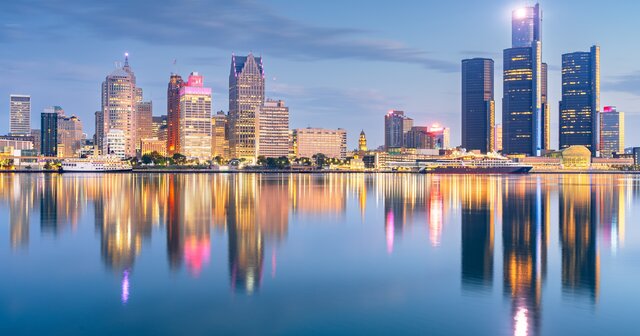

 By Paul Godek
By Paul Godek
The New York Times’ most recent list of the top places in the world to visit included … the city of Detroit! Congratulations, Detroit. The New York Times praises the city’s rehabilitated Michigan Central Station, riverfront parks, museums, the soon-to-be-open Gordie Howe Bridge and a plethora of notable hotels, restaurants and shops. Kudos to all the hard-working, dedicated people helping to restore the city.
All well and good, but let’s keep a few things in mind.
In the decades after World War II, Detroit could boast the highest per-capita income in the country. Now it has one of the lowest. While the city’s population has stabilized in recent years, it is still at about one-third of its peak in the 1950s. Over the course of two generations, two of every three residents up and left. Vast tracts of land remain uninhabited, home to feral dogs, dilapidated houses, abandoned factories, and open fields crisscrossed by crumbling streets. Downtown and a few adjacent neighborhoods are thriving, which makes Detroit a nice place to visit. But not many people want to stay.
Let us recall the major drivers of Detroit’s demise: an undiversified economy concentrated in a single industry that, to understate it, did not adapt well to increasing foreign competition; powerful unions, public and private, that played a leading role in that inability to adapt; and high tax rates that were not adjusted to reflect the changing economic realities.
Yes, there was a horrible race riot in 1967, but there were such riots in many other cities, few of which suffered Detroit’s long-run demise. There was no inevitability in any of this. The decline in Detroit happened gradually, over the course of the last 60 years; it was a slow-motion disaster.
Now consider another ranking. Among the largest cities in each state, the U.S. Chamber of Commerce ranks Detroit number one for the highest overall tax burden, including income taxes, property taxes, sales taxes and automobile taxes. At one point, Detroit could afford to be as larcenous as other high-tax cities such as New York, Los Angeles and Chicago, but that time is long past. The high taxes that contributed to Detroit’s demise are now stifling its recovery.
Detroit has taken some important first steps, but a real renaissance will require lower taxes. Other important policy improvements are necessary at the state level, as the Mackinac Center for Public Policy has well documented. And we can hope that, at the federal level, there will be less onerous regulation of the automobile industry. Let the renaissance begin.
Paul Godek, born and raised in Detroit, is an economist who currently resides in Alexandria VA. He visits Michigan often to meet with family and friends.
Permission to reprint this blog post in whole or in part is hereby granted, provided that the author (or authors) and the Mackinac Center for Public Policy are properly cited.
Get insightful commentary and the most reliable research on Michigan issues sent straight to your inbox.

The Mackinac Center for Public Policy is a nonprofit research and educational institute that advances the principles of free markets and limited government. Through our research and education programs, we challenge government overreach and advocate for a free-market approach to public policy that frees people to realize their potential and dreams.
Please consider contributing to our work to advance a freer and more prosperous state.

Donate | About | Blog | Pressroom | Publications | Careers | Site Map | Email Signup | Contact